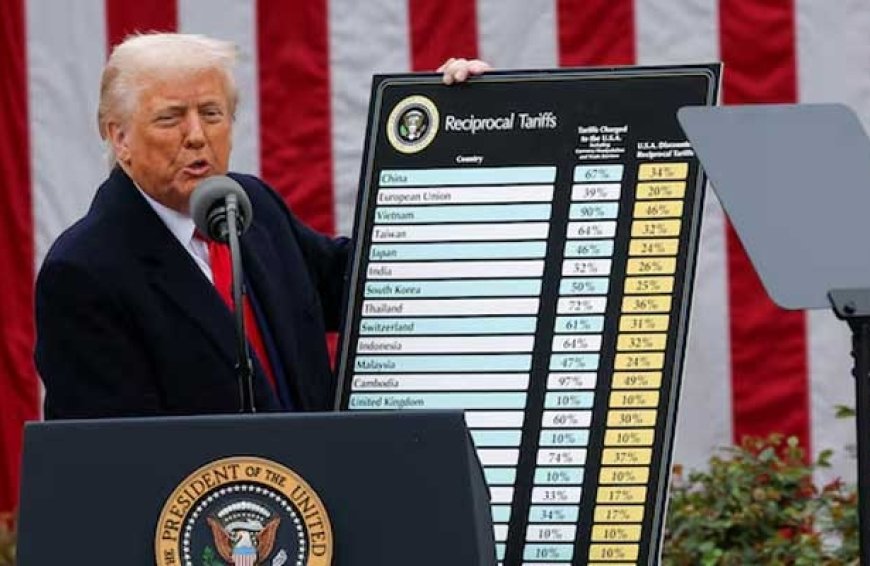Trump Imposes South Asia’s Lowest Import Tariff of 19% in PAK
In a key outcome of its recent energy and trade deal with the United States, Pakistan has secured a 19% U.S. tariff rate on its exports—significantly below the 29% previously applied and the highest tariffs faced by other South Asian exporters. Announced by President Donald Trump, the rate is effective from August 7, 2025, with importers given one week's notice.

In a key outcome of its recent energy and trade deal with the United States, Pakistan has secured a 19% U.S. tariff rate on its exports—significantly below the 29% previously applied and the highest tariffs faced by other South Asian exporters. Announced by President Donald Trump, the rate is effective from August 7, 2025, with importers given one week's notice. Islamabad welcomed the decision, citing it as a strategic win for the nation's textile-dominated export economy. At the same time, India faces a much higher 25% tariff, highlighting a growing tilt in U.S. South Asia trade diplomacy.
-
New Tariff Level: U.S. tariff on Pakistani goods reduced from 29% to 19%, the lowest in South Asia.
-
Effective Date: Tariffs take effect from August 7, 2025; shipments in transit after that date are exempt.
-
Trade Deal Context: Comes after announcement of U.S.–Pakistan cooperation to develop Pakistan’s oil reserves.
-
India’s Tariff: India faces a 25% tariff and additional penalty for Russian energy ties—worse terms than Pakistan.
-
Export Dependency: The U.S. is Pakistan’s largest textile market (~60% of exports); reduced tariff is expected to aid competitiveness.
-
Regional Comparison: Pakistan’s 19% sits well below Bangladesh (20%), Sri Lanka (20%), and Vietnam (20%), making it the most favoured among regional peers.
Trade Architecture
The tariff shift stems from President Trump’s "Further Modifying The Reciprocal Tariff Rates" executive order, part of a sweeping global tariff framework targeting 68 countries.
Negotiation Leverage
Pakistan's tariff cut followed days of negotiations aligning with a separate energy cooperation pact—part of Trump’s broader strategy to reshape South Asian trade alignments.
Economic Gain for Pakistan
As Trump framed it, “We have just concluded a deal… [to] work together on developing their massive Oil Reserves.” Pakistan reciprocated by rolling back a 5% digital services tax—a goodwill gesture.
With textiles accounting for ~60% of Pakistani exports to the U.S., a reduced tariff is expected to improve profit margins, enable pricing advantages, and aid market retention.
The tariff differentiation underscores U.S. strategic orientation in South Asia—favoring Pakistan while leveraging pressure on India over its Russian ties.
Pakistan’s negotiated advantage reflects transactional diplomacy under Trump—where trade privileges align with broader strategic cooperation (energy, crypto, mining).
Prime Minister Shehbaz Sharif expressed “profound thanks” to President Trump for the tariff concession. Pakistani officials also noted the rollback of the 5% digital tax.
Experts note that while the tariff cut is welcome, Pakistan must also address structural issues—like improving export diversity and maintaining compliance under SAFTA and global trade rules.
Indian opposition parties lambasted their government, calling the 25% tariff a diplomatic failure and a setback to India’s manufacturing ambitions. Markets in India plunged in response.
The reduction of U.S. import duties on Pakistani exports from 29% to 19% marks a strategic victory for Islamabad—transforming its export calculus and offering a firmer footing in South Asia’s competitive trade environment. Coupled with deepening U.S.–Pakistan collaboration on energy and digital exchange, the move underscores a new era of transactional diplomacy underlining Washington’s regional choice.

 Ateeq Ur Rehman
Ateeq Ur Rehman